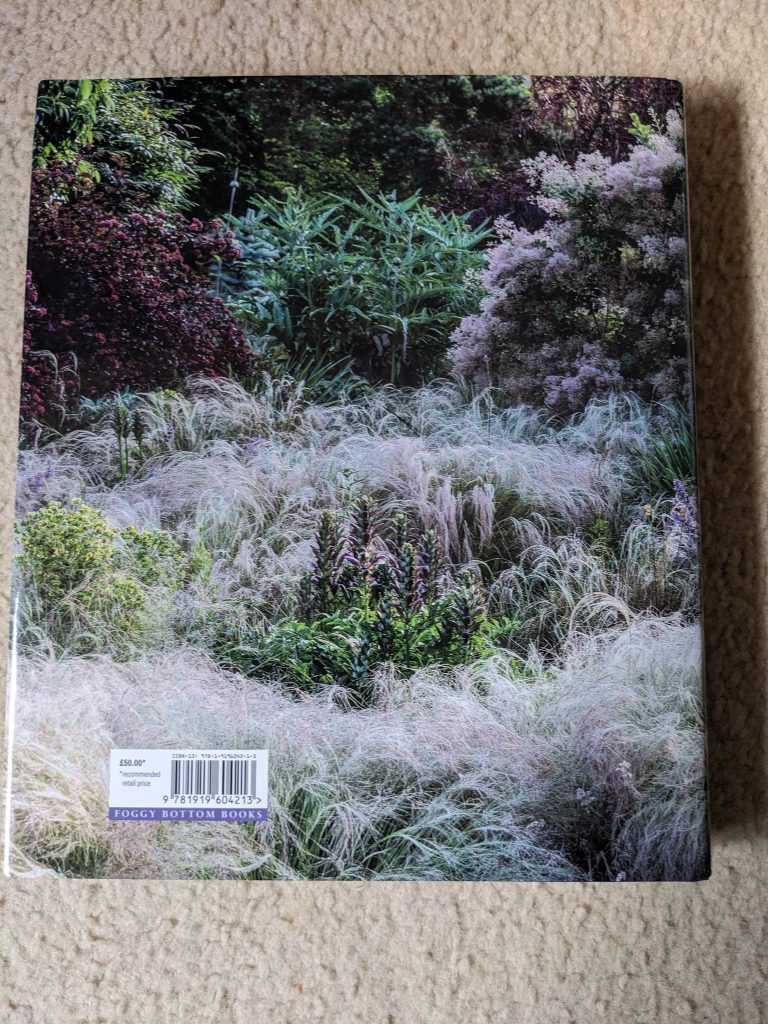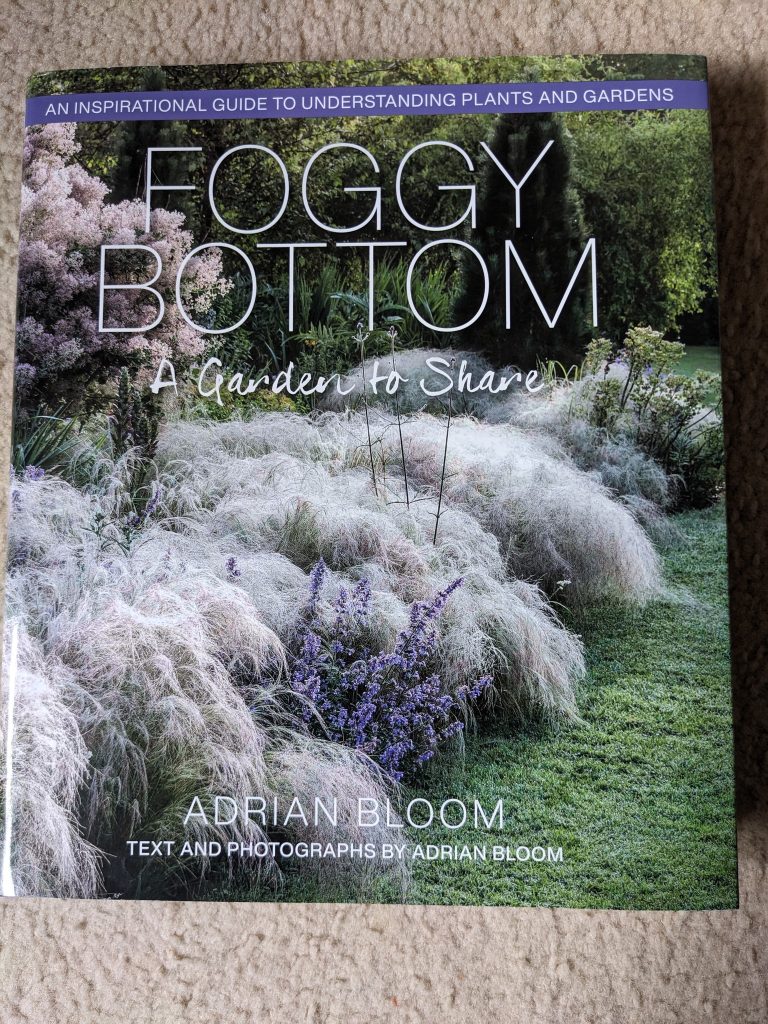Book review: Foggy Bottom – A Garden To Share by Adrian Bloom
Review by Tim Gillett
I came across a letter in the Sunday Times Culture magazine in which Gardeners’ World presenter Monty Don was accused of being “patronising” “as he roams his acres telling us to re-pot and take cuttings to over winter in a greenhouse….when most of us only have tiny gardens or only backyards.” That’s certainly a view, a view that’s slightly envious I feel, and not one I subscribe to. I’d prefer to thank Monty Don and his co-presenters and guests for introducing me to a new world of plants and flowers I’ve never heard of and how to freely or cheaply produce fresh plants from existing ones. He may have a large garden and I joke surely he must have an army of gardeners? But he’s sharing his garden with us and that’s generous.
Sharing a garden is something Adrian Bloom does to the limit in Foggy Bottom. Indeed the word is in the book’s sub title. Foggy Bottom is the name of the six acre garden his father started in 1957. It’s part of the 17 acres Bressingham Steam and Gardens attraction near Diss in Norfolk which also houses the Dad’s Army exhibition.
It is a stunning garden to visit in any of the seasons, and Adrian Bloom’s book containing some of the fifty thousand photos he’s taken over the seasons and years brings his garden to life for the reader who’s not been there Page after page of this 400 page plus book is a feast of colour and valuable information.
The name Foggy Bottom comes from the author’s time in the United States at the end of the 1950’s and it’s not the only import from stateside. The 100 feet redwood, “the guardian of the garden” is “the one I planted earlier,” jokes Adrian Bloom, from a packet of seeds he bought while working at the 1960 Winter Olympics in California. “I never imagined…that over sixty years later I would be able to look up to the magnificent giant trees 40 from our house!” he writes. My favourite trees in his garden are the erect, statuesque and elegant Italian cypresses which the author calls “green pencils.” They are reminiscent of that scene in the film Gladiator when Maximus Decimus Meridius approaches his home.
I’ve often wondered how long it takes to create a garden, to grow plants and trees, and then to enjoy them in their maturity. Is it worth it – will I live to see the fruits of my labours? Foggy Bottom is living testimony, although Adrian Bloom’s father who started it in 1957 by creating forty eight beds or islands of more than four thousand species, died in 2005. However, self gratification is only a small part of such a venture. Both his and his son’s creation and efforts are for anyone who wishes to take an interest and visit. The tone and feel of the book is one that wants the reader to enjoy Foggy Bottom as Adrian Bloom does.
There’s detail about how he and his band of gardeners set out the beds for public display. An area called Crossways Corner, for example, is populated with plants and shrubs “to keep well below head height of even a very short person, so not only could it be overseen from a distance, but viewed as a foreground display, allowing views across to other vistas.”
As one would imagine, colour and seasons are crucially important in a public garden like Foggy Bottom. The book is adorned with colour photos showing the gardens in each of the seasons – snowy, misty, spring dewy and full blazing sunshine. Adrian Bloom writes that white is “the strongest visible colour to use as focal points in the garden” and the Hydrangea Annabelle shows that off in all its vibrancy. I was captivated by photos of Japanese blood grass, Imperata Cylindrica, which Adrian has grown into what he calls a river running through a bed. There are other “rivers” of other plants creating an effect I’ve not experienced before.
There are whole chapters in the book about plant species. There is so much I learned from the chapters on hostas and ferns including some ideas of plants I’d like to try, such as the fern Adrian insists every garden should have – Dryopteris Erythosora – “you can envision it being around at the time of the dinosaurs.” .” There are also ideas for woodland and shade plants including the delightful Cardamine Heptaphylla with its delicate lilac pink flowers.
Unsurprisingly, the dedication and commitment of the Foggy Garden team over the years has led to the development of new sub species of plants. One is Lucifer’s Match, a hardier crimson scarlet crocosmia, “less prone to collapse after summer wind and rain.
I would urge the reader to take notes as you make your way through this tome, though the index to the plants and trees written about or pictured is an essential boon, which I know is an oxymoron.
At £50.00 this is a book beyond the affordability of most, but as a special Christmas or anniversary present for a horticultural couple or as a present for that big birthday gardener, it’s ideal. And, of course, if it’s out of reach financially, reserve a copy from the library.
Buy the book direct online now.







